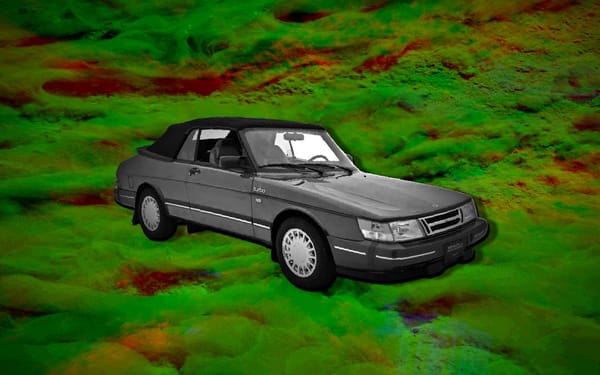THE BALLAD OF THE HOLLYWOOD CASTING DIRECTOR WHO SELECTS THE FIRST MANNED MISSION TO MARS
Imagine if a Hollywood casting director was hired in a crucial directorial role at NASA immediately before it selected a crew for the first manned mission to Mars.

Imagine if a Hollywood casting director was hired in a crucial directorial role at NASA immediately before it selected a crew for the first manned mission to Mars. There was a time when rigid social structures prevented individuals from taking their destiny into their own hands. That time has passed, and it is now possible for anyone, anywhere, at any time, to stand up, so to speak, and walk away from those bonds or tasks or responsibilities or requirements that have become tiresome, in search of a better future for themselves, which is what makes this imagined scenario so vivid and compelling. To define the roles I have proposed more specifically, a casting director is the professional who matches actors with roles in film productions, with consideration of suitability for the role, budget and promotional opportunities. NASA is the National Aeronautics and Space Administration. A director makes decisions.
This career change is not completely unthinkable. Anyone would have to agree that an elite player in Hollywood would be both cunning and charismatic enough to impress an interview panel. You might also agree that NASA recruiters, having hired countless bureaucrats, scientists and career public servants, would be disarmed by the magnetism and ruthless acumen of a film industry executive. And it is, you may concede, more than possible that a casting director, having spent many years chained to the Hollywood machine, may have grown jaded with the industry and may harbour a desire to contribute to something more meaningful.
Imagine this Hollywood casting director takes the job. Imagine they are in the role for a brief time, say weeks or months, when suddenly the President announces: the United States of America will send its first manned exploratory mission to Mars. The mission will orbit the red planet, land on its surface, run extensive and detailed tests on the Martian atmosphere, geology etc., then return to Earth. The same day the casting director is pulled into the boardroom with the chiefs of NASA and told that they must select the crew who will populate this mission.
Imagine their terror. Much rests on them to crew the mission with the right people for the job. But don't forget: they are an individual who is self-confident, hard-headed, determined, and unused to showing weakness. It would be difficult to imagine this person either admitting the limits of their ability or deferring to someone else. We may imagine them wrestling internally with the correct approach, how much to give, what to hold back. After spending time in self-reflection it is likely, even probable, that they may come to the conclusion: I must follow the instincts that have always brought me success, instead of trying to inhabit a persona that is foreign to me.
Following this conclusion, the Hollywood casting director would do their thing, which I wouldn't want to speculate on. Presumably ask questions like "Who seems intelligent? Who has the placid disposition to troubleshoot space issues with a cool head? Who could I see in a space suit? Who gives the impression of someone who could be ruthlessly decisive in the instance of a crew member becoming evil and needing to be sucked out an air lock? Who is unlikely to turn evil? Who has buzz? In whom are audiences interested?" After which they cast Sydney Sweeney, Barry Keoghan, Andrew Garfield and Ella Purnell as the crew members. Let's assume these actors accept the roles for whatever reason: misunderstanding, ambition, curiosity. They're inducted, blasted off into space, travel several months to Mars. Along the way they exhibit their fair share of human behaviours. Sydney Sweeney leaves half-eaten protein rations tucked into nooks of the cabin, which annoys the other crewmembers. But she also endears herself to them in other ways. Barry Keoghan is given to staring out the windows with his chin between thumb and forefinger and shaking his head, because it is no County Cork out there. Andrew Garfield diligently carries out crew tasks with such regimented punctuality that it pisses everyone off. Ella Purnell's novel observations about zero-G life are a riot. Meanwhile back on Earth outrage over qualified astronauts being passed up for silver screen elite gives way to curiosity in the actors' odyssey and begrudging respect at their ability to function as a crew. At the same time their stock as working actors declines. They will forever be seen through the lens of an astronaut, whatever that might mean. Mission control, of course, does not share this with them. They are sent only the most positive clippings from trade publications and social media. They arrive in Mars' orbit and land according to plan. Their first steps on the red planet are broadcast back to Earth. The glamour, the poise, the elegance, the consideration for blocking are felt so deeply by television audiences on Earth. There is champagne in the control room at NASA.
The actor/astronauts complete their mission and return to Earth successfully. That's one way of imagining how this scenario ends. You can also imagine that, while they are on the surface of Mars, the seal on one of the doors of their temporary habitat - a specially-designed lander that converts to a dwelling/laboratory - having degraded during landing, slowly but inexorably causes the habitat to lose heat and pressure. Over a terrifying and frantic 72 hours the Hollywood stars attempt to diagnose and solve the problem, losing oxygen and energy all the while, but their inexperience and lack of engineering expertise mean that despite the increasingly strident instructions from Houston on how to fix the problem, they one by one succumb to cold and die. Maybe their navigational instruments malfunction on the return trip and, having missed the crucial early signs, they find they are unable to correct course in time and can only helplessly watch the pale blue dot shrink into the black as the batteries of the shuttle dwindle.
Who knows what happens after that. "But you can't say who knows - this is your imagined scenario!" Well, you're right about that. Maybe Andrew Garfield loses his muscle tone and his silhouette its appeal. Maybe away from the warmth of the Hollywood sunlamp, the hothouse flower of Sydney Sweeney wilts. They become despondent or crazy or consumed by eccentricities. Maybe the calm quiet, the distance, the scale of the universe, makes it impossible for them to inhabit acting roles as they once did. I don't really know. It's all possible. Or none of it is. The unbreakable rules of the systems we live within have a way of weathering chaos. Maybe it would be a disaster for a Hollywood casting director to select the crew of NASA's first manned mission to Mars. Or maybe the collective expertise of the space agency and simple will to survive would carry the mission. Maybe on their return a wave of affection and relief would propel their careers to new artistic and commercial success. Maybe the artistry of Sydney Sweeney, Barry Keoghan, Andrew Garfield and Ella Purnell would yield results that the prudence and measuredness of a team of classic astronauts could never. Maybe they would collect small amounts of new data, increasing the human knowledge of the fossil world of Mars by 1 unit. Maybe nothing at all would change. Maybe the US President would be handed a note in his official mausoleum, lift his senile head from the desk, read that the mission had splashed down in the Pacific Ocean and ask if it was the guy he played college ball with. Maybe there would be a parade. Any of it is possible with imagination.





